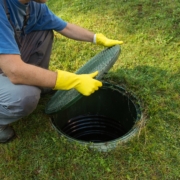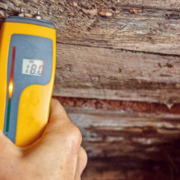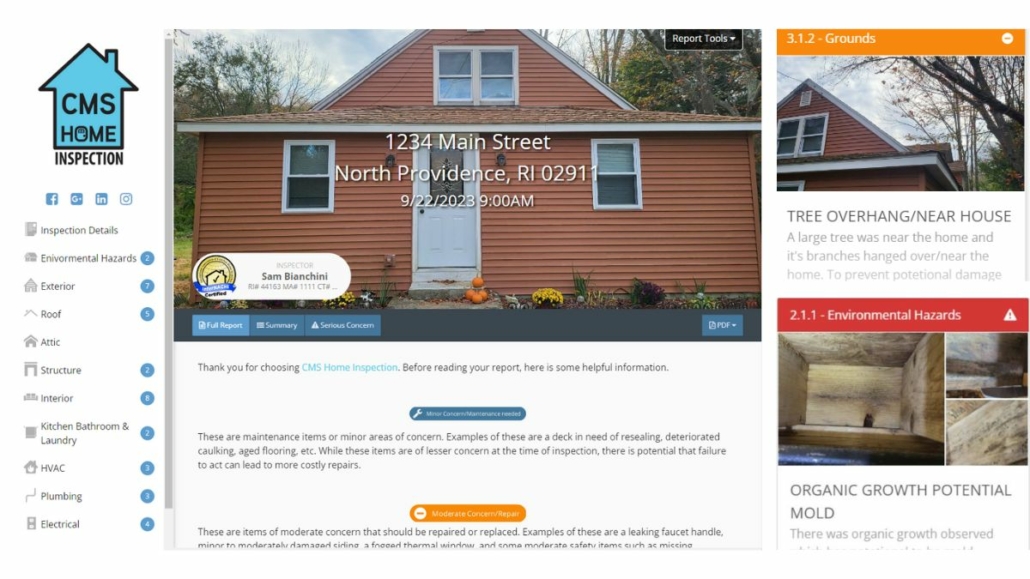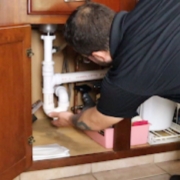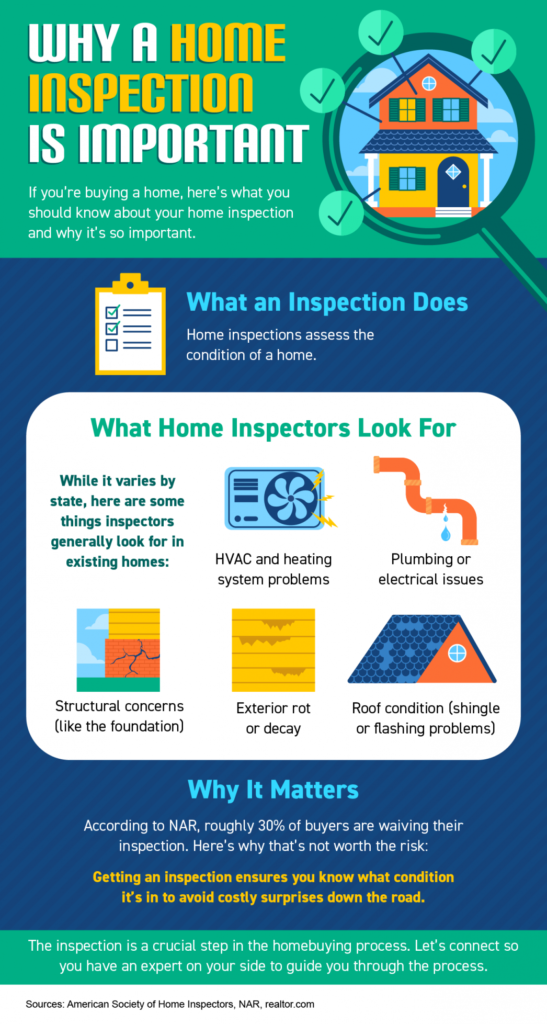Buying or selling a home can be both an exciting and stressful experience. However, one crucial step in the process can make a significant difference – the home inspection report. This invaluable document provides essential insights into the condition of the property. But, for many, decoding your home inspection report can feel like deciphering a foreign language. That’s where we come in.
In this article, we will be your trusted guides through the process of decoding your home inspection report. Our goal is to ensure that you have a crystal-clear understanding of what this report means for your real estate transaction. We will break down the different sections, highlight the most critical findings, and explain the implications they may have on the property’s value and safety.
With our expert tips and insights, you will be well-equipped to negotiate repairs, estimate maintenance costs, and make informed decisions whether you’re a first-time homebuyer or a seasoned real estate investor. Join us as we demystify the home inspection report and help you navigate the path to a smooth and successful real estate transaction.
Importance of Home Inspection Reports
A home inspection report is a crucial document that provides an objective, in-depth evaluation of a property’s condition. Whether you are buying or selling a home, understanding the importance of this report is essential for a smooth real estate transaction.
When you receive a home inspection report, it is important to review it thoroughly. This report will highlight any existing issues, potential problems, and safety concerns with the property. By understanding and addressing these issues, you can make informed decisions about the property’s value and negotiate repairs or adjustments accordingly.
The home inspection report can also serve as a tool for future maintenance planning. It provides a comprehensive overview of the property’s condition, allowing you to estimate potential maintenance costs and prioritize repairs. This information is valuable for both buyers and sellers, as it helps facilitate a fair and transparent real estate transaction.
It’s important to note that the home inspector can only inspect what they can see, so hidden defects might go unnoticed. Problems that can arise from within walls, under the roof or foundation, or other places that are not easily accessible or visible are not typically part of a home inspection. Additionally, a home inspection typically does not include things like testing for mold, radon, lead, asbestos, water quality, and pests, as well as inspections of septic systems, private wells, or sewers. At CMS Home Inspection, we offer all of these options as an addition to your home inspection to give you the most complete information possible to make the most informed decision on your new property.
Understanding the Structure of a Home Inspection Report
Understanding the structure of your report is essential to decoding your home inspection report. While the format may vary slightly depending on the inspector or company, most home inspection reports follow a similar outline.
- Cover Page and Summary: The cover page provides essential details about the property, such as the address, inspection date, and the name of the inspector. The summary section typically provides a concise overview of the inspection findings, highlighting any significant issues or safety concerns.
- General Information: This section provides general information about the property, including its age, size, and construction type. It may also include details about the heating, cooling, plumbing, and electrical systems.
- Exterior: The exterior section focuses on the property’s exterior components, such as the roof, siding, windows, doors, and foundation. It assesses their condition and identifies any visible defects or maintenance needs.
- Interior: This section evaluates the interior components of the property, including the walls, ceilings, floors, stairs, and overall structural integrity. It may also cover insulation, ventilation, and the presence of any hazardous materials.
- Plumbing: The plumbing section examines the property’s plumbing system, including fixtures, pipes, drains, and water supply. It identifies any leaks, water pressure issues, or potential plumbing problems.
- Electrical: This section focuses on the electrical system, including the main panel, wiring, outlets, and light fixtures. It checks for any safety hazards, outdated wiring, or improper installations.
- Heating, Ventilation, and Air Conditioning (HVAC): The HVAC section evaluates the heating and cooling systems, including the furnace, air conditioner, ductwork, and thermostat. It assesses their condition, efficiency, and potential need for repairs or upgrades.
- Structural: The structural section examines the property’s structural components, such as the foundation, walls, roof framing, and load-bearing elements. It looks for signs of structural damage, cracks, or instability.
- Additional Systems or Components: Depending on the property’s features, additional sections may be included to assess specific systems or components, such as swimming pools, fireplaces, or outbuildings.
By familiarizing yourself with the structure of a home inspection report, you can easily navigate through the document and understand the information it provides.
See an example of a CMS Rhode Island Home Inspection Report here
Common Sections in a Home Inspection Report
A home inspection report typically contains several common sections that cover various aspects of the property. Understanding these sections will help you decode the report and identify the most critical findings.
- Condition Ratings: Most home inspection reports use a standardized system of condition ratings to assess the property’s components. These ratings typically range from “Good” to “Poor” or “Functional” to “Non-Functional.” Understanding these ratings will provide insight into the overall condition and potential maintenance needs of the property.
- Safety Concerns: The report will highlight any safety concerns or hazards identified during the inspection. These may include electrical issues, structural damage, or the presence of mold, asbestos, or other harmful substances. It is crucial to address these concerns promptly to ensure the safety of the occupants.
- Major Issues: Major issues are significant defects or damages that require immediate attention or substantial repairs. These may include structural problems, water damage, foundation issues, or roof leaks. Identifying and addressing these major issues is critical for the property’s safety, value, and future maintenance.
- Minor Issues: Minor issues are typically smaller defects or maintenance needs that may not pose an immediate threat to the property’s safety or functionality. These may include cracked tiles, loose handrails, or minor plumbing leaks. While not as critical as major issues, it is still essential to address these minor issues to maintain the property’s overall condition.
Interpreting the Condition Ratings in a Home Inspection Report
The condition ratings in a home inspection report provide a standardized assessment of each component’s condition. Understanding these ratings will help you gauge the overall state of the property and estimate potential maintenance costs.
- Good (Functional): This rating indicates that the component is in good working condition, with no significant defects or maintenance needs. It implies that the component is functioning as intended and does not require immediate attention.
- Fair (Marginal): A fair rating suggests that the component has some defects or maintenance needs that may affect its performance or lifespan. While it may be functional for now, repairs or upgrades may be necessary in the near future.
- Poor (Non-Functional): A poor rating indicates that the component is not functioning as intended or has significant defects that require immediate attention. Repairs or replacements are necessary to restore its functionality and ensure the property’s safety.
By understanding the condition ratings, you can prioritize repairs, estimate maintenance costs, and factor in potential expenses when negotiating the property’s price.
Identifying Major Issues by Decoding Your Home Inspection Report
Major issues identified in a home inspection report are critical defects or damages that require immediate attention and significant repairs. These issues can have a substantial impact on the property’s safety, value, and future maintenance costs.
- Structural Problems: Structural issues, such as foundation cracks, sagging floors, or roof framing damage, are major concerns that should be addressed promptly. These issues can compromise the property’s stability and may require extensive repairs or professional intervention.
- Water Damage: Water damage, including leaks, moisture intrusion, or mold growth, can lead to structural deterioration and health hazards. It is crucial to identify the source of the water intrusion and fix it to prevent further damage and potential health issues.
- Electrical Hazards: Electrical issues, such as outdated wiring, overloaded circuits, or improper installations, pose a significant safety risk. These hazards should be addressed by a qualified electrician to ensure the property’s electrical system is safe and up to code.
- Plumbing Problems: Plumbing issues, such as leaks, poor water pressure, or sewer line blockages, can cause water damage and disrupt the property’s functionality. Identifying and fixing these problems is essential to maintain a healthy and functional plumbing system.
Identifying major issues in a home inspection report allows you to prioritize necessary repairs and address any safety concerns promptly.
Addressing Minor Issues in a Home Inspection Report
While not as critical as major issues, minor issues identified in a home inspection report should not be overlooked. These smaller defects or maintenance needs, if left unattended, can worsen over time and lead to more significant problems.
- Cosmetic Repairs: Cosmetic issues, such as peeling paint, cracked tiles, or damaged countertops, may not affect the property’s functionality but can impact its overall aesthetics. Addressing these minor repairs can help enhance the property’s appeal and market value.
- Routine Maintenance: Regular maintenance tasks, such as cleaning gutters, replacing air filters, or servicing HVAC systems, may be identified in the report. While these tasks may seem minor, they are essential for the property’s ongoing upkeep and can prevent more significant issues from arising.
- Deferred Maintenance: Deferred maintenance refers to necessary repairs or maintenance tasks that have been neglected or postponed. These can include items like a leaking faucet, loose handrails, or cracked caulking. Addressing deferred maintenance is crucial to prevent further damage and maintain the property’s condition.
By addressing minor issues promptly, you can prevent them from escalating into major problems and ensure the property remains in good condition.
Negotiating Repairs Based on a Home Inspection Report
A home inspection report provides valuable information that can be used for negotiating repairs or adjustments to the property’s price. Armed with the insights from the report, you can have informed discussions with the other party and reach a fair agreement.
- Prioritize Major Issues: Start by focusing on the major issues identified in the report. These are the most critical concerns that require immediate attention and substantial repairs. Discuss the necessary repairs with the other party and negotiate who will be responsible for addressing them.
- Estimate Repair Costs: Use the information from the home inspection report to estimate the repair costs for both major and minor issues. Obtain quotes from professionals if needed. This will help you determine a fair and realistic amount to request in negotiations.
- Consider Future Maintenance: In addition to addressing immediate repairs, consider any potential future maintenance needs identified in the report. Factor in these costs when negotiating to ensure that you are accounting for the property’s long-term upkeep.
- Seek Professional Advice: If you are unsure about the repairs or negotiations, consider seeking advice from a real estate agent, attorney, or other professionals experienced in real estate transactions. Their expertise can help you navigate the negotiation process and ensure a fair outcome.
Negotiating repairs based on a home inspection report is an essential step in the real estate transaction process. By using the report as a guide, you can advocate for necessary repairs and protect your interests.
Tips for a Smooth Real Estate Transaction Using a Home Inspection Report
To ensure a smooth real estate transaction using a home inspection report, consider the following tips:
- Review the Report Thoroughly: Take the time to carefully review the home inspection report, paying attention to the major and minor issues identified. Understand the implications of these findings and consider their potential impact on the property’s value and safety.
- Consult with Professionals: Seek advice from professionals, such as real estate agents, attorneys, or other home inspectors, to help you interpret the report and guide you through the negotiation process. Their expertise can provide valuable insights and ensure that you are making informed decisions.
- Prioritize Repairs: Prioritize the repairs based on the report’s findings, focusing on the major issues that require immediate attention. Addressing these concerns first will help ensure the property’s safety and prevent further damage.
- Document Repairs: Keep a record of all repairs or maintenance tasks completed based on the home inspection report. This documentation will serve as proof of the property’s condition and any repairs made, which can be valuable for future reference or potential resale.
- Communicate Openly: Maintain open and transparent communication with the other party throughout the negotiation and transaction process. Convey your concerns, expectations, and proposed solutions based on the home inspection report.
By following these tips, you can navigate the real estate transaction process smoothly, utilizing the insights from the home inspection report to your advantage, which will make decoding your home inspection report easier.
Conclusion: The Role of a Home Inspection Report in the Home Buying Process
Decoding your home inspection report is an essential step in the home buying or selling process. This report provides valuable insights into the property’s condition, identifies any defects or safety concerns, and helps estimate potential maintenance costs.
Understanding the structure of a home inspection report, interpreting the condition ratings, identifying major and minor issues, and negotiating repairs are crucial aspects of decoding the report. Hiring professionals for further review and guidance can provide additional expertise and ensure a comprehensive understanding of the report’s implications.
By utilizing the insights from the home inspection report, you can make informed decisions, negotiate repairs or adjustments, and ensure a smooth and successful real estate transaction. Whether you’re a first-time homebuyer or a seasoned investor, decoding your home inspection report is the key to a confident and rewarding real estate experience.
Remember, we are here to guide you through the process and provide expert advice. Reach out to us today and let us help you with decoding your home inspection report for a seamless real estate transaction.

